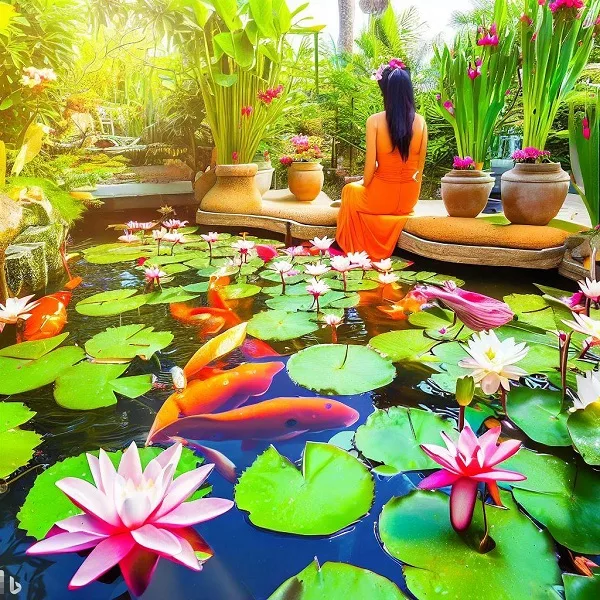
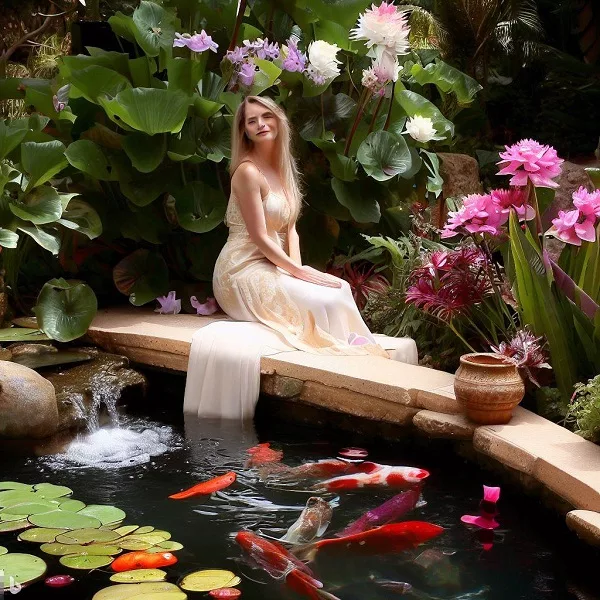
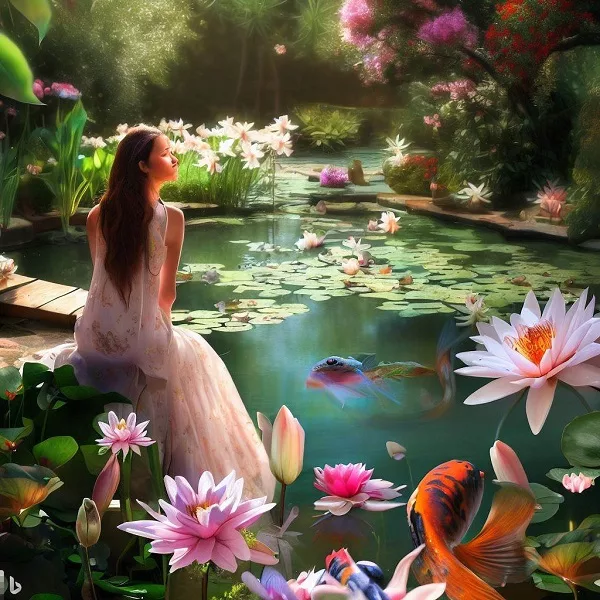
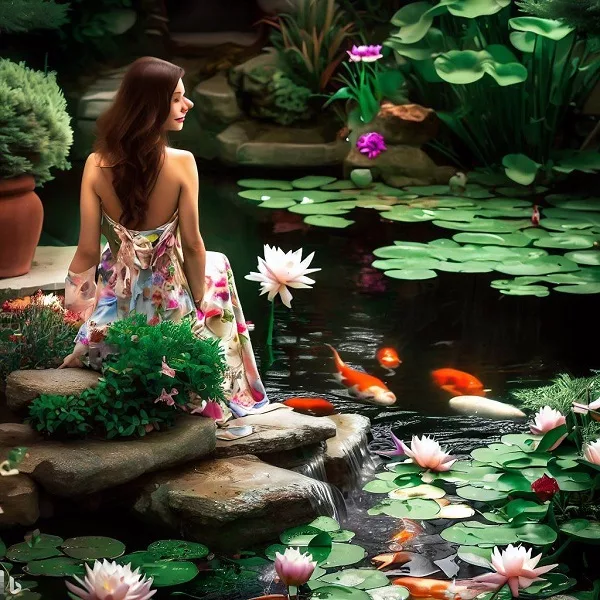
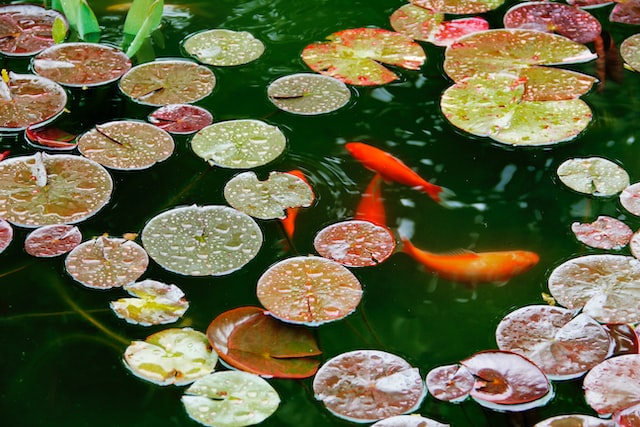
A koi pond is a beautiful addition to any garden, adding a serene and tranquil atmosphere to your outdoor space. Choosing the right plants to surround your koi pond can enhance its natural beauty and provide a more natural habitat for your fish. Here are some of the best plants to consider for your koi pond.
- Water Lilies Water lilies are a popular choice for koi ponds as they add a stunning touch of color to the water. They also provide shade for your fish, which helps to regulate the water temperature and keep it cooler. Water lilies require full sunlight and calm waters to thrive, so make sure your pond is located in a sunny spot and away from any strong water currents.
- Lotus Like water lilies, lotus plants are a beautiful addition to a koi pond. They have large, showy flowers that bloom in a range of colors, from white to pink to red. Lotus plants prefer still, shallow waters and full sunlight, making them an ideal choice for a koi pond.
- Cattails Cattails are a great choice for adding some height and texture to your koi pond. These tall, slender plants have long, grass-like leaves and produce cylindrical spikes of flowers in the summer. They are hardy and can thrive in a range of conditions, including full sun and partial shade.
- Water Hyacinth Water hyacinth is a floating plant that can add a unique touch to your koi pond. Its large, rounded leaves float on the surface of the water, creating a beautiful, green carpet. Water hyacinth also helps to regulate the water temperature and provides shade for your fish.
- Water Lettuce Water lettuce is another floating plant that can add a lush, green look to your koi pond. Its leaves are larger than water hyacinth, and they grow in a rosette shape, creating a beautiful display on the surface of the water. Water lettuce also provides shade and shelter for your fish, making it an excellent choice for a koi pond.
When choosing plants for your koi pond, it’s important to consider the specific needs of your fish and the growing conditions in your area. Make sure to choose plants that are suitable for your climate and that will thrive in the conditions around your pond. With the right plants, you can create a beautiful, natural oasis that your koi will love.
More about What Plants Go Around a Koi Pond
Koi ponds are often decorated with plants, both for their aesthetic value and to provide some natural filtration for the water. While there are many different plants that can be used in and around a koi pond, not all of them are ideal. Also, the specific plants that will work best for your pond will depend on a number of factors, such as the climate in your area and the size of your pond.
When selecting plants for your koi pond, it’s important to choose ones that are non-toxic to fish. Many common garden plants, such as roses and lilies, can be toxic to koi if they are eaten. There are many beautiful and non-toxic plants to choose from, so there’s no need to take any chances.
Plants That Go Perfectly Around a Koi Pond
So, let’s take a look at some of the best plants to use around a koi pond, divided into three categories:
Submerged Plants:
1. Anacharis
2. Hornwort
3. Watermilfoil
4. Parrot’s Feather
5. Cabomba
6. Red Ludwigia
7. Water Lettuce
8. Water Hyacinth
9. Water Clover
10. Creeping Jenny
Floating Plants:
1. Frogbit
2. Duckweed
3. Mosquito Ferns
4. Watershield
5. Amazon Frogbit
6. Red Root Floater
7. Giant Duckweed
8. Jewel Weed
9. Water Poppy
10. Azolla
Marginal or Bog Plants:
1. Arrowhead
2. Cattails
3. Pickerel Rush
4. Sweetflag
5. Marsh Marigold
6. Canna Lilies
7. Soft Rush
8. Iris
9. Yellow Flag
10. Dragon’s Mouth
Canna Lilies are one of our personal favorites for around koi ponds, but really any of these plants would make a beautiful and functional addition to your pond. This plant is known for its showy flowers and large, tropical leaves. It’s a perennial plant, so it will come back year after year. Canna lilies like full sun and moist soil, so they’re perfect for growing around ponds.
Iris is another great option for around koi ponds. These beautiful flowers come in a wide range of colors and can add a lot of visual interest to your pond. Iris plants like full sun or partial shade and moist, well-drained soil.
Marginal or bog plants are generally going to be the best option for around the edge of your koi pond. These plants like damp or wet conditions and will help to filter the water as well as prevent erosion around the pond. Arrowhead, sweet flag, and cattails are all great choices for marginal plants.
If you live in an area with a warm climate, you may want to consider some of the floating plants on our list. These plants can provide shade and cooling for your koi fish, which is important in warm weather. Some of our favorites include duckweed, watershield, and Amazon frogbit.
No matter what plants you choose for your koi pond, be sure to research them before adding them to your pond. Make sure they are non-toxic to fish and that they will do well in the conditions around your pond. With a little planning, you can create a beautiful and functional koi pond that will be the envy of your neighborhood.
15 Things you should know about Koi
1. Koi are a domesticated form of the common carp (Cyprinus carpio) and were originally bred in China for food.
2. They are now popular ornamental fish in outdoor ponds and water gardens across the world.
3. Koi come in a variety of colors, including white, black, red, yellow, and orange.
4. Koi are not goldfish, although they are often confused with them.
5. Koi can live for up to 40 years and reach lengths of up to four feet.
6. Koi are omnivorous fish and will eat a variety of food, including pellets, vegetables, and live food such as insects and small fish.
7. Koi are social creatures and prefer to be kept in groups.
8. Koi are very sensitive to changes in water quality and temperature and must be carefully monitored.
9. Predator fish, such as herons and raccoons, can pose a danger to koi, so ponds must be properly constructed and maintained to protect them.
10. Koi are considered a symbol of good luck in many cultures and are often given as gifts.
11. Koi are commonly used in the practice of feng shui and are believed to bring positive energy to a space.
12. Koi breeding is a complex process that involves selecting fish with the desired color patterns and then carefully crossing them to produce offspring with those same patterns.
13. Koi shows are held throughout the world and are a popular way for enthusiasts to show off their fish.
14. Koi can be expensive, with some individual fish selling for thousands of dollars.
15. Koi are beautiful and fascinating creatures that make wonderful pets. If you’re thinking of adding one to your home, be sure to do your research and be prepared to provide the care they need.
5 Things you should never do to your koi fish
1. Don’t overfeed your koi fish.
The amount of food your koi need will vary depending on the time of year and the water temperature. In general, you should feed your koi 2-3 times per week, and each feeding should be limited to the amount of food that the fish can consume in a few minutes. Overfeeding can lead to water quality problems and may even kill your koi.
2. Don’t use harsh chemicals in your koi pond.
Koi are very sensitive to changes in water quality, and the use of harsh chemicals can be deadly. If you need to treat your pond for algae or other problems, be sure to use a product that is safe for fish and follow the directions carefully.
3. Don’t allow your koi to become overstressed.
Koi are delicate creatures and can easily become overstressed. Too much noise, bright lights, or even too much handling can all lead to stress in koi. If you notice your koi acting unusually, it may be a sign of stress and you should take steps to reduce the stressors in their environment.
4. Don’t neglect your koi pond.
A koi pond is a big responsibility, and it’s important to keep up with regular maintenance. This includes cleaning the pond, testing the water quality, and providing adequate filtration. Neglecting your pond can lead to serious problems, such as sick or dying fish.
5. Don’t release your koi into the wild.
Koi are domesticated fish and are not well-suited to life in the wild. Releasing them into natural bodies of water can introduce disease and harm native wildlife. If you no longer want your koi, the best thing to do is to find a new home for them with someone who is prepared to care for them properly.
We hope you enjoyed learning more about koi fish. If you’re thinking of adding one to your home, be sure to do your research and be prepared to provide the care they need. Thanks for reading! learn more about koi fish facts